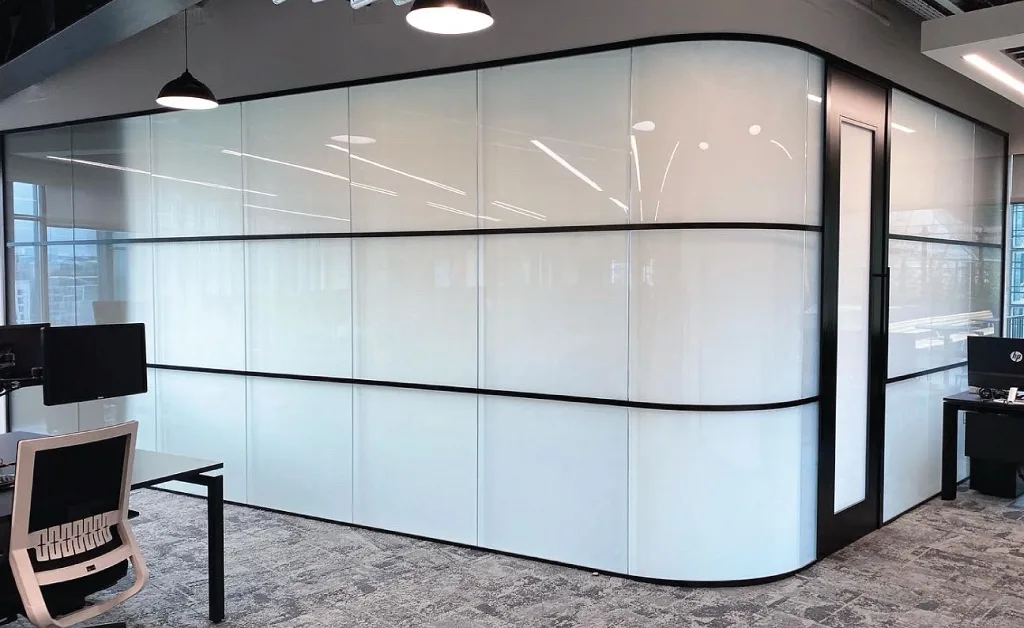
Smart Glass: Innovation, Applications, and Benefits
Smart glass technology, a transformative advancement in the tech industry, is revolutionising the way we interact with our environment. This guide delves into the intricacies of smart glass, exploring its functions, applications, and benefits. With its ability to switch between transparency and opacity, smart glass offers unprecedented control over light and heat, enhancing energy efficiency and privacy. In this comprehensive guide, we will explore how smart glass works, its potential applications, and its effectiveness in various settings.
What is Smart Glass?
Smart glass, also known as switchable glass, is a type of glass whose light transmission properties are altered when voltage, light, or heat is applied. The glass can transition between transparent and opaque states, providing privacy, reducing glare, and controlling heat and light flow. This innovative technology is utilised in various forms, including electrochromic, photochromic, thermochromic, and liquid crystal technologies.
Electrochromic smart glass changes its light transmission properties with the application of an electrical voltage. Photochromic glass reacts to light intensity, darkening in response to sunlight. Thermochromic glass changes its properties based on temperature fluctuations, while liquid crystal glass switches from opaque to clear when an electric current is applied. These variations provide flexibility and functionality across different environments and uses.
How Smart Glass Works
The underlying principle of smart glass technology lies in its ability to alter its physical properties in response to external stimuli. For instance, in electrochromic smart glass, an electrical current triggers a chemical reaction within the glass layers, causing a change in opacity. This process involves ion transfer between the layers of glass, which can be controlled to achieve the desired level of transparency or darkness.
In liquid crystal smart glass, an electric current reorients liquid crystal molecules embedded within the glass layers, changing the glass from opaque to transparent. This type of smart glass is particularly effective for applications requiring rapid switching between states, such as in conference rooms or vehicle windows. The versatility of smart glass technologies allows for a wide range of applications, enhancing both functionality and aesthetics in modern design.
Where Smart Glass Can Be Used
Smart glass technology is applicable in various sectors, including residential, commercial, automotive, and healthcare. In residential buildings, smart glass enhances energy efficiency by regulating indoor temperatures and reducing the need for artificial lighting. In commercial settings, it offers privacy and aesthetic appeal, creating adaptable office spaces and meeting rooms. The automotive industry benefits from smart glass in the form of adjustable sunroofs and windows, while healthcare facilities utilise it for privacy partitions and energy-saving windows.
Benefits of Smart Glass
Smart glass technology offers numerous advantages, making it a valuable addition to modern architecture and design. Key benefits include:
- Energy Efficiency: By controlling the amount of heat and light entering a building, smart glass reduces the reliance on heating, ventilation, and air conditioning systems, leading to significant energy savings.
- Privacy on Demand: Smart glass provides instant privacy without the need for curtains or blinds, making it ideal for offices, bathrooms, and medical facilities.
- Enhanced Comfort: The ability to reduce glare and control light levels enhances occupant comfort and productivity, particularly in office environments.
- UV Protection: Smart glass can block harmful ultraviolet rays, protecting furniture, artwork, and occupants from UV damage.

How Effective is Smart Glass?
The effectiveness of smart glass is evident in its widespread adoption across various industries. Its ability to adapt to changing environmental conditions and user preferences makes it a versatile solution for modern buildings and vehicles. Studies have shown that smart glass can reduce energy consumption by up to 20%, highlighting its potential for contributing to sustainable building practices.
Moreover, the integration of smart glass in healthcare settings has demonstrated its effectiveness in enhancing patient privacy and comfort. By providing adjustable transparency, smart glass partitions enable flexible use of space while maintaining patient dignity. In the automotive sector, smart glass enhances driving comfort and safety by reducing glare and controlling interior temperatures.
Maximising the Benefits of Smart Glass
To maximise the benefits of smart glass, it is essential to consider its installation and maintenance. Proper installation ensures optimal performance, while regular maintenance preserves its functionality and longevity. Additionally, integrating smart glass with building automation systems can enhance its effectiveness, providing seamless control over lighting, temperature, and privacy settings.
When selecting smart glass for specific applications, it is crucial to choose the right type of technology to meet the desired requirements. For instance, electrochromic glass is ideal for environments where gradual changes in transparency are preferred, while liquid crystal glass is suitable for applications requiring rapid switching. Understanding the unique benefits and limitations of each type of smart glass can help in making informed decisions for its use.
